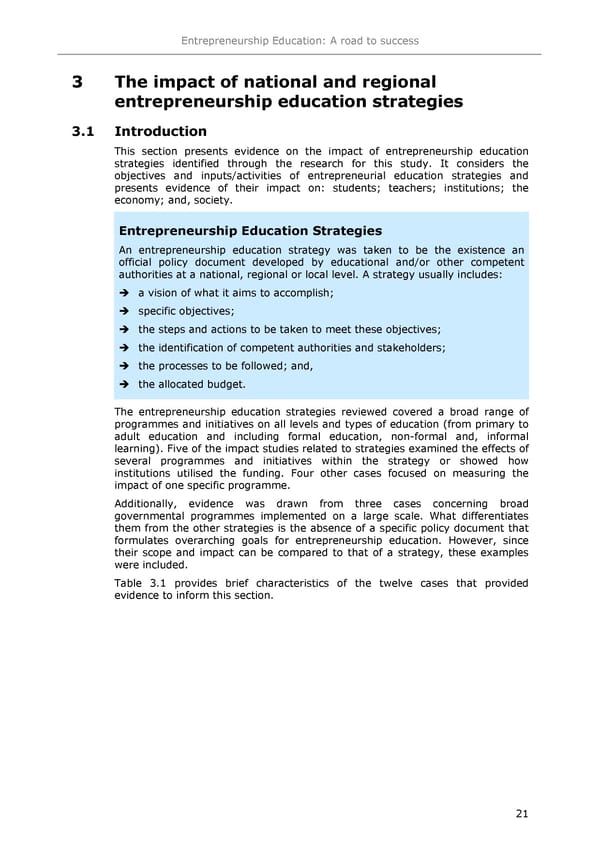Entrepreneurship Education: A road to success 3 The impact of national and regional entrepreneurship education strategies 3.1 Introduction This section presents evidence on the impact of entrepreneurship education strategies identified through the research for this study. It considers the objectives and inputs/activities of entrepreneurial education strategies and presents evidence of their impact on: students; teachers; institutions; the economy; and, society. Entrepreneurship Education Strategies An entrepreneurship education strategy was taken to be the existence an official policy document developed by educational and/or other competent authorities at a national, regional or local level. A strategy usually includes: a vision of what it aims to accomplish; specific objectives; the steps and actions to be taken to meet these objectives; the identification of competent authorities and stakeholders; the processes to be followed; and, the allocated budget. The entrepreneurship education strategies reviewed covered a broad range of programmes and initiatives on all levels and types of education (from primary to adult education and including formal education, non-formal and, informal learning). Five of the impact studies related to strategies examined the effects of several programmes and initiatives within the strategy or showed how institutions utilised the funding. Four other cases focused on measuring the impact of one specific programme. Additionally, evidence was drawn from three cases concerning broad governmental programmes implemented on a large scale. What differentiates them from the other strategies is the absence of a specific policy document that formulates overarching goals for entrepreneurship education. However, since their scope and impact can be compared to that of a strategy, these examples were included. Table 3.1 provides brief characteristics of the twelve cases that provided evidence to inform this section. 21
 Entrepreneurship Education Page 24 Page 26
Entrepreneurship Education Page 24 Page 26